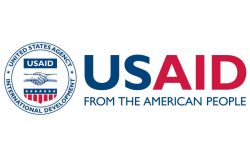There is something frighteningly repetitive about media reports regarding women… wives, paramours, girlfriends, all of whom share the common fate of having been brutalized, abused and often slaughtered in the most heinous ways by intimate partners.
Equally shocking is the fact that as a society we still appear far from seized with the sense of alarm that ought to attend these atrocities. The perpetrators, emboldened by our indifference, are, in many instances, literally getting away with murder.
Those of us who view the spectacle mostly from a distance – government, political parties, the legal system, social organizations, the church and the various other stakeholders demonstrate sorry little evidence of having been seized with a sense of urgency that corresponds with the phenomenon known as Intimate Partner Violence (IPV). None of these institutions can be said to have taken a strong and sustained stand against the practice.
There has been no shortage of public discourse on the issue of IPV; no shortage of assertive condemnations of the individual acts as they have occurred; at the end of the day, however, it does not appear that as a community, we have been sufficiently outraged to seek to build a fire wall that creates a strong even if not formidable barrier against violence against our women. We appear not to understand that vacuous pronouncements and pledges make us part of the problem, not part of the solution.
When all is said and done IPV usually generates for less public discourse than the brouhaha over political issues of the day like corruption, whether we need a Marriot Hotel, whether there is need for an expanded Cheddi Jagan International Airport, the considerable sums already expended on a still far from complete Amalia Falls Hydro Electric Project road and the goings on in the nation’s Tenth Parliament which, up until now, may well have been a considerable underachiever in terms of what might have been expected of it. We are preoccupied with these things to the exclusion of IPV even though the problem of abused women constitutes a crisis the scale of which is devouring the very fabric of our society. We live in a society where protecting women from violence must take its place in a queue behind a host of far less important, far less worthwhile issues.
It may well be that we have become sufficiently numbed by the frequency of those cases of battered female partners that we have come to take the practice of brutalizing women for granted; in the process, we appear not to understand that once we slip into a condition of indifference over IPV we, by default, undervalue women as a whole include those who are closest to us.
Here is Guyana our indifference to IPV is, in large measure, a reflection of a seeming lack of understanding of both the nature or the scale of the problem. IPV is by far the most common form of violence against women in Guyana. It includes physical, sexual and emotional abuse as well as controlling behaviour by the intimate partner. IPV occurs in all settings and among all socio-economic, religious and cultural groups. Here, it is apposite to note that social customs that have to do with considerations of ‘shame’ very often serve as inhibiting factors against reporting violence against women. In its extreme forms, IPV can amount to a condition of permanent physical and psychological bondage.
More than that – and perhaps worse – many men who perpetuate violence against women actually labour under the impression that their intimate partners become their property.
It is the range of cruelties that violated women must suffer – and sometimes the length of time for which they suffer – that makes violence against women an urgent national concern.
IPV refers to any behaviour within an intimate relationship that causes physical, psychological or sexual harm to those in the relationship. Examples of types of behaviour include acts of physical violence, such as slapping, hitting, kicking and beating; sexual violence, including forced sexual intercourse and other forms of sexual coercion; emotional (psychological) abuse, such as insults, belittling, constant humiliation, intimidation (e.g. destroying things), threats of harm and threats to take away children.
Controlling behaviour includes isolating a partner from family and friends; monitoring their movements; and restricting access to financial resources, employment, education or medical care.
Since many women who are victims of violence come from poor homes and may well in some instances not recognize some forms of IPV they endure their suffering, sometimes for years, often labouring under the apprehension that they are obliged to endure such treatment.
We have long arrived at a point where those – particularly those in authority – who remain indifferent to violence against women ought surely to be considered as culpable as the perpetrators, the simple truth being that pockets of maladjusted men who believe that brutalizing wives and spouses can never really be more determined, more effective than a society which, as a whole, sets its face against the practice and is committed to having it excised from our midst.
The current ugly state of affairs is, in effect, a reflection of the quality of the society that we have created and in which we live. We appear not to understand that our existence is decidedly diminished in a society that raises no alarms and voices no protests over the frightening proliferation of violence against women. What we have instead are occasional high-sounding pronouncements and proclamations and expressions of outrage over the latest incident of IPV that lasts only as long as the incident itself sustains itself in the mass media. Those pronouncements and proclamations are usually attended by pregnant pauses that are broken only when the next violent act manages to secure a measure of public attention.
The problem is bound to grow worse in a society where battered women seeking recourse in the law must, in many instances, make their case to a police establishment which, apart from lacking in either the training or the orientation to address the problem, are themselves trapped in gender orientation which often trivializes IPV, placing it the category of domestic incidents that are undeserving of the attention of the Police. Victims of vicious beatings have been known to complain that the advice of the police is that they “go home and sort it out.”
Sadly, IPV in Guyana has long reached crisis proportions. The World Health Organization’s (WHO) ‘take’ on violence against women is that it is “a human rights violation” and a “social justice and public health problem that touches every level of society in every part of the world.” This is by no means a problem that can be resolved by simply going home and sorting it out. It is our society, moreso the custodians of our laws that must take urgent action to sort themselves out.









